|
Publishing History > The Harper Torchbook Series: A History and Personal Assessment The Harper Torchbooks Series:
|
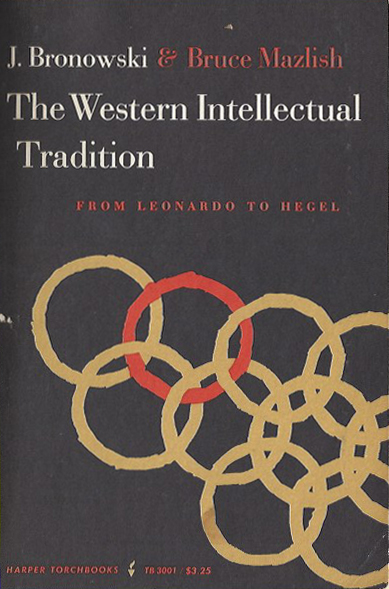 |
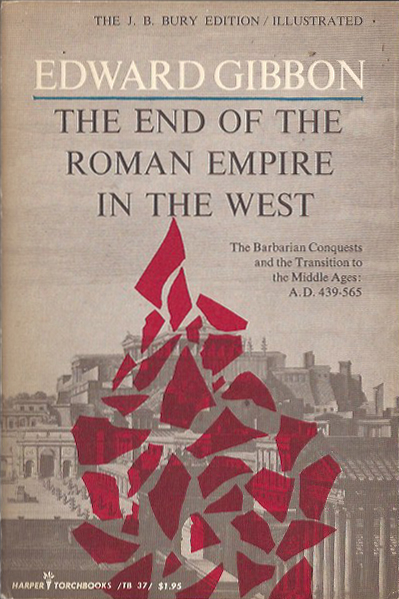 |
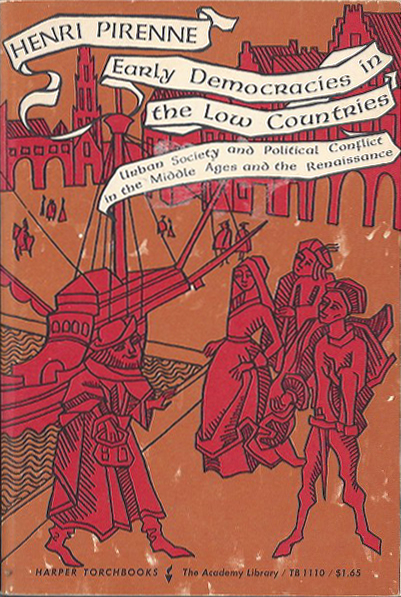 |
The Western Intellectual Tradition - J. Bronowski. 1962. TB 3001.
The End of the Roman Empire in the West - Edward Gibbon. 1958. TB 37.
Early Democracies in the Low Countries - Henri Pirenne. 1963. TB 1110.
Some Publication Details
This essay, like my collection, emphasizes the volumes published through mid-1970. I describe these as “first-generation.” The focus is on first printings.
The original focus of the series was religion. The very first volumes show “TL” for “Torchlights” in early printings; this soon changed to “TB” for “Torchbooks”. The focus of the series gradually expanded beyond religion, and in 1959, different “libraries” were introduced, linked to series number. The Cloister Library, Academy Library, and Science Library designations began in 1959; the Bollingen Library and the University Library in 1960-62; and the Cathedral Library and the Temple Library in 1964-65.
The table below summarizes the Libraries. The Libraries include every volume; this convention is supported by the short lists in the front of early volumes and the “reference-lists” at the back of later volumes. However, not all volumes display their Library: Volumes printed 1959 or earlier do not show the Library, at least in their first printings, since they had not been established. The Library appears to be indicated on cover and title page, or title page alone, on most volumes published from 1959-67.
![]()
A stylised burning torch - the symbol of the Harper Torchbooks series
Source: front cover of The Western Intellectural Tradition (by J. Bronowksi) (TB 3001)
All Torchbooks are 5 1/4 x 8 inches (13.3 x 20.3 cm). The torch symbol appears above the series number on the spine, and the cover shows “Harper Torchbooks”, with the torch symbol separating the two words, and the series number (and sometimes the Library) . I distinguish “first” and “second” generation 5 books: the first generation, through mid-1970 or TB 1560 roughly, contains about 900 volumes with crisp matte covers of generally conservative but colorful design . The second generation, from mid-1970 or TB 1561 through the end of the series around 1979, contains an estimated 400 volumes with glossy or laminated covers of more avant-garde or stylized design and with more specialized or postmodern subject matter. These volumes probably were printed in smaller quantities because of the specialized topics. The dividing line of 1970 or TB 1560 is an approximation: not only were volumes not published strictly in order of series number, but also some volumes as early as 1968 have “second generation” features and some second-generation volumes have matte covers and traditional subject matter. Later printings also show differences.
Torchbooks had distinctive content: distinguished subject matter with scholarly authors and additional forewords, introductions, and bibliographies. I discuss cover art in greater detail in the last section.
Harper Torchbooks by "Library" Designation
|
Library Name
|
Series Numbers
|
Subjects
|
Introduced/Ended
|
|
Cloister
|
TB 1-149, 251-255
(a few TL)* |
Religion (mostly),
other |
1956/1967
|
|
Science
|
TB 501-586
|
Science
|
1959/1966
|
|
Academy
|
TB 1001-1300s
|
Various academic
|
1959/1968
|
|
Bollingen
|
TB 2001-2022,
2050 |
Bollingen Foundation
publications (selected) 6 |
1961/1966
|
|
University
|
TB 3001-3086,
3501-3505 |
Academic, including
adopted series |
1962/1968 |
|
Cathedral
|
TB 301-321,
370...391 |
Catholic, Eastern
Orthodox subjects |
1965/1966
|
|
Temple
|
TB 801...840**
|
Judaism
|
1965/1968
|
|
No Library
Shown***, # |
TB 1300-1900s
(some HR) |
Various academic
subjects |
1968/1979
|
Notes on the above table: (a) Numbering
• Some gaps exist in numbering. These are identified in PublishingHistory.com's Torchbooks checklist for volumes up to TB 1500 and TB 2001 to TB 3505 (forthcoming). It has not been possible to identify all series numbers, or gaps, for volumes TB 1501 through TB 1900s. Also, a very few volumes were reissued with a new series number. Since numbering preceded publication decisions, the series number may be out of sequence with the publication date.
• I have taken the front-of-book listings (early volumes) and reference-lists (later volumes) as the delineation of the Libraries. Early Torchbooks (1956-59) were included in the Cloister Library after it was set up in 1959. Some volumes do not show the Library on the cover, or on the title page—these are generally those published or printed before 1959 or after 1967.
* "TL" for Torchlights, only for earliest printings of early series numbers (1-8).
** Selected from Meridian’s Jewish Publication Society Series (JP prefix), almost identical in format except imprint. Some are shown in front-of-book or reference-lists along with Torchbooks.
*** Also Academy Library according to reference-lists. Library is not shown on cover and/or title page. I am aware of series numbers in the 1900s and have TB 1938. Some volumes, mostly in documentary series, bear prefix “HR” and are indeed Torchbooks.
# Outliers. Odd, late volumes in 2000s or 5000s or “Torchbook Library Editions” (clothbound). Internet searches also occasionally show books in the “Men of Wisdom” series (1957-62) or “popular” volumes listed as “Harper Torch” (after 2000), and these are not at all part of the Torchbooks series.
Notes on the above table: (b) Subject Content in the "Libraries"
• Cloister Library—titles on religion (Christian and other traditions), history, philosophy, etc.
• Science Library—titles on physical sciences, history and philosophy of science, mathematics and logic.
• Academy Library—titles across varying academic fields, emphasizing social sciences and literature. (Both subject areas and physical characteristics appeared to change subtly—see paragraph on later issues).
• Bollingen Library—selected titles originally published by Bollingen Foundation.
• University Library—similar to Academy Library but including series such as Rise of Modern Europe, New American Nation series, as well as individual titles.
• Cathedral Library—titles on Catholic and Eastern Orthodox traditions only.
• Temple Library—titles of Jewish interest.
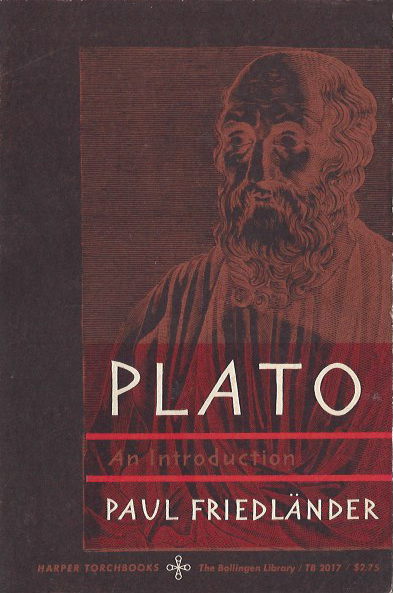 |
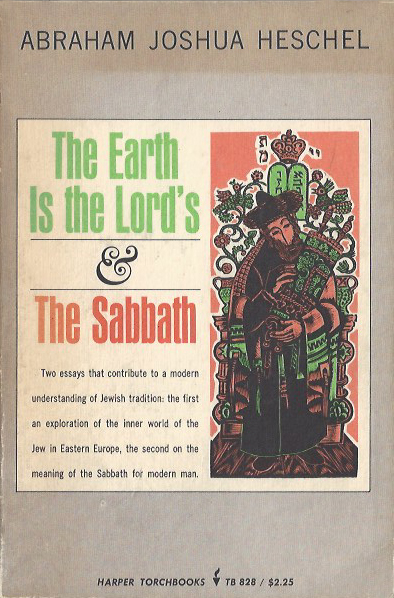 |
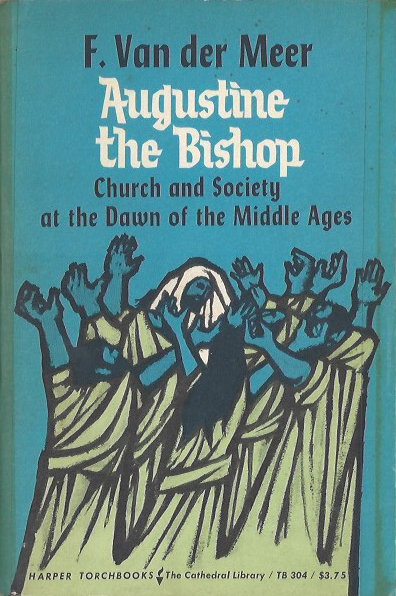 |
Plato: An Introduction - Paul Friedländer. 1964. TB 2017.
The Earth is the Lord’s and The Sabbath - Abraham Joshua Heschel. 1966. TB 828.
Augustine the Bishop - F. Van der Meer. 1965 TB 304.
My Collecting Experience and My Appreciation of Harper Torchbooks
My Collection I was attracted to the Torchbooks series by the combination of academic subject matter, durability, and attractive cover. While I have not specifically collected cover designs, they are an essential element of Torchbooks. I have collected books either new, or secondhand in good to fine condition. I have not tried to upgrade for condition -- some are near new, some have signatures, notes, remainder marks, or stickers. I do not collect variations and if a volume was reissued, I have sought the earlier series number. The collection consists of over 800 volumes, mostly of the “first generation,” and resides in three bookcases.
I purchased my first Torchbook on entering college, and was able to buy, at first selectively (mostly history and philosophy of history) and then more broadly as my appreciation of the series increased. My first sources were university and retail bookstores on the East Coast, new or at remainder price, and by the 1970s, secondhand bookstores, often at 25 cents to $2. Both the supply of Torchbooks and the number of bookshops gradually decreased. Since 2000, I have been able to collect mostly by using internet sites like Abebooks.com and eBay.com. Searching online has been more efficient than browsing bookshops yet certainly less personal and less satisfying. I could not have reached 800 volumes without the internet; however, I have only bought either one or a few volumes at a time. I have enjoyed other quality paperback series of the same period as Torchbooks, but collected them much more selectively.
Appreciation: Range and Examples The range of subjects and authors is exceptional, and I list below just a few volumes that I find outstanding. The reference lists in the back of many volumes list areas (collapsed here) such as American Studies, History (by periods), Historiography and Philosophy of History, Anthropology, Art, Economics and Economic History, Political Science, Government, and Law, Philosophy, Psychology, Literature and Literary Criticism, Mythology, Sociology, and several subdivisions of Religion and of Science. History books, the area of my earliest interest, cover every period of European history from the Dark Ages to the twentieth century, as well as other areas of ancient, world, and American history.
To name a few highlights (a personal selection), there are volumes by Edward Gibbon (TB 37 and 46), Jacob Burckhardt (TB 40, 41, and 1216), Samuel Pepys (TB 1007), James Boswell (TB 1254), Henri Pirenne (TB 1110); the Rise of Modern Europe series (TB 3002 for example), a new translation of Genesis (TB 836); Abraham Joshua Heschel (The Earth Is the Lord's and The Sabbath) (828; also 807, 838), G.G. Coulton (Medieval Village, Manor, and Monastery)(TB 1022, also 25,and 26), Gunnar Myrdal (TB 1443, 1444), K. E. Kirk's Vision of God (TB 137), an exciting title, and two translations of the Bhagavad-Gita (TB 115 and 1759). Titles correspond to the listing on PublishingHistory.com's Torchbooks page. As I list these high spots, I realize that I have left off numerous titles by Kant, Kierkegaard, W.E.B. DuBois, Peter Drucker, and three American Presidents, to name a few.
A note of appreciation of the cover designs is in order. "First generation" Torchbook covers were colorful but conservative in design and varied in style.7 Covers designs show credits to Ellen Raskin 8, Milton Glaser 9, Seymour Chwast 10, Alex Tsao, Marian Ebert, and Charles Gottlieb, and many other individual designers and design firms. Graphic designer Alexander Budnitz states "The range of illustration and color is amazing. The tonality of the aging paper is sumptuous" 11. From my observation, Torchbooks are the only quality paperback series with full-color, full-cover design integrating both an illustration theme and title and subtext. I did not consciously buy for the covers but they are an essential part of the book to attract me as a browser. I have published a listing and discussion of the artists and designers of Torchbooks in my essay titled The Cover Artists of Harper Torchbooks Series. In other quality paperback series, the cover art mostly emphasizes typography or includes a monochrome graphic in the cover design 12. As no small consideration, the Torchbooks were durable and show little sign of wear fifty or sixty years after publication.
To this amateur collector, the Torchbooks have provided a valuable resource of material to read as well as an attractive, durable format with attractive covers. I have enjoyed the special introductions, or just new "foreword[s], to the Torchbooks edition", and often ample bibliographies or bibliographical essays; many of the books are based on "named lectures"; and a few have significant portions of bilingual text. They represent a collection of scholarship; like many collectors, I cannot read every volume, and some are difficult to read if rewarding to dip into. I imagine a Republic of Letters with a conversation among the authors represented, across a wide variety of disciplines. The series represents, to me, the best of recent (mid-20th century) and older scholarship with an unusually high consistency -- other imprints and series offer great books as well but a narrower selection in contrast to the wide range of the Torchbook series. All this attests to the quality and thoroughness of the achievement of their developers, Mr. Arnold and Mr. Van Dusen.
The early "quality paperbacks" represent a finite set of books that I happen to have found collectible, and an attractive snapshot of publishing history at a time when "quality paperbacks" were limited in quantity -- this particular concept would be difficult to replicate over a longer or more recent time period. There is not a comparable series from the mid-1970s forward. The number of new titles published in 1956 or 1960 in the United States is a fraction of that for any later decade, and selecting or collecting books is an entirely different task. Like many collectors, I have been a more thorough collector than a consistent reader, but the series has made an extremely wide variety of scholarship available.
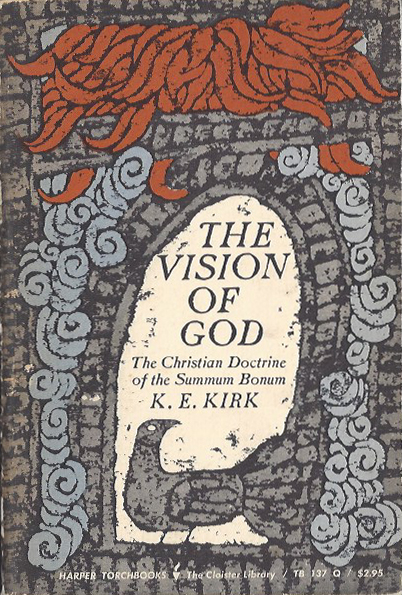 |
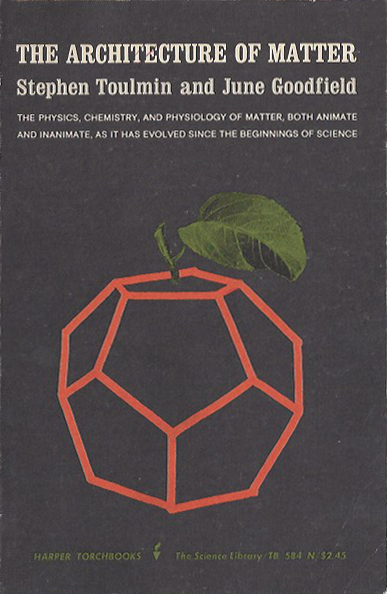 |
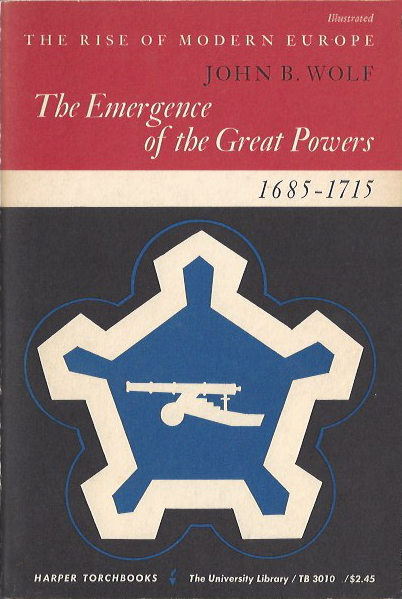 |
The Vision of God: The Christian Doctrine of the Summum Bonum - K. E. Kirk. 1966. TB 137 Q.
The Architecture of Matter - Stephen Toulmin & June Goodfield. 1966. TB 584 N.
The Emergence of the Great Powers, 1685-1715 - John B. Wolf. 1962 TB 3010.
Appendix A: Reference Sources for the Harper Torchbooks series
The collector or student could refer to the list of titles in the front of a volume, up to the early 1960s and, later, the lists "A reference-list of Harper Torchbooks, classified by subject, is printed at the end of this volume." Some titles were advertised in periodicals or even newspaper book sections. Publishers' Trade List Annual (PTLA) had a section for Harper, and Harper issued semiannual booklets "Harper Torchbooks/ Library-Size Paperbacks" listing existing and forthcoming volumes in the series (I have only two such booklets). A listing by title, mostly first-generation based on my collection, is available at publishinghistory.com/harper-torchbooks.html. A comprehensive list of the second-generation volumes, or even a count of them, would require excessive effort and is beyond the scope of this essay. The publication of reference-list catalogues, such as those mentioned above, did not continue after 1970.
Appendix B: Availability and Factors Affecting Supply of Torchbooks
The degree of availability of Torchbooks to the reader or collector has followed changes in the publishing industry and in the supply of secondhand bookstores in the United States. First-generation volumes were readily available at university and city bookstores, full price and remaindered. Second-generation volumes were harder to find because publishers offered bookstores a lower discount (20% rather than the earlier 40%) 13; because the U.S. Internal Revenue Service issued a ruling discouraging deductibility of returns; and because titles were more specialized and smaller quantities were printed. By 1980, there was little backlist of Torchbooks at Harper.
About the Author:
John A. Mellman is a retired biostatistician. He and his wife June live in Colorado Springs, Colorado, United States.
Footnotes
1. Melvin Luxton Arnold (1913-2000) was an American publisher and editor. In 1946 he became the director of the Beacon Press. He was an editor for well-known figures such as Albert Schweitzer and Rev. Dr. Martin Luther King, Jr. In 1956 he helped launch the Harper Torchbooks series.
See: Alexandra Arnold Lynch and Jeannette Hopkins, Arnold, Melvin (1913-2000): Biographical Introduction; Beacon Press -- The Growth of an Idea; Melvin Arnold and Unitarian Publishing, harvardsquarelibrary.org
2. Hugh Van Dusen (born 1934) was an editor with Harper and Brothers (later Harper & Row and HarperCollins) for 60 years before retiring in 2016 as Harper Vice President and Executive Editor. He helped launch Harper Torchbooks and was closely involved with the Harper's Colophon and Perennial imprints.
See: (1) Longtime HarperCollins Editor Hugh Van Dusen to Retire, shelf-awareness.com, 6 August 2016; and (2) Hugh Van Dusen Remembers Harper Perennial, shelf-awareness.com, 7 October 2016.
3. Telephone conversation of this article's author with Hugh Van Dusen, 21 April 2017.
4. The “paperback revolution”, in the literature of books, refers either to mass market paperbacks or to quality paperbacks alone. For this essay the "quality paperback" revolution refers to the latter. The term "quality paperback" is taken from Jason Epstein's Book Business: Publishing Past, Present and Future, W. W. Norton & Co., 1991, pp 60-61. While there is extensive description of modern paperbacks, I have only sampled it, and it mostly describes mass market paperbacks (which have many more enthusiastic collectors). (I limit my discussion to English-language books.)
5. Cf. the terminology used on this page: Penguin Classics | The Penguin Checklist Project, penguinchecklist.wordpress.com.
6. See McGuire, William, Bollingen, Princeton 1982, for an account of the entire Bollingen series.
7. Apart from significant literature on book publishing in the era of the paperback revolution or in the twentieth century there is a variety of websites and blogs relating to design, including books and record covers.
8. Ellen Raskin (1928-84) was an American writer, illustrator, and designer. See: Ginny Moore Kruse, Ellen Raskin: Notable Wisconsin Author, ccbc.education.wisc.edu.
9. Milton Glaser (born 1929) is an American graphic designer. See: Milton Glaser, miltonglaser.com.
10. Seymour Chwast (born 1931) is an American graphic designer, illustrator, and type designer. See: (1) Seymour Chwast: The Pushpin Gallery, pushpininc.com; and (2) The Seymour Chwast Archive, seymourchwastarchive.com.
11. Alexander S. Budnitz, Harper Torchbooks of the '50s and '60s, abudnitz.com. A gallery of Harper Torchbook covers with some brief comments.
12. Other American series (Anchor Books through Viking Compass, mentioned in the introductory paragraphs) featured a graphic design in monochrome or limited color that resembled a drawing and may have provided ornament to the cover. This is but a small change from early Penguin books, or even Everyman's Library and Modern Library, which featured just one or two styles of cover, binding, or dust jacket.
13. Telephone conversation of this article's author with Hugh Van Dusen, 21 April 2017.
Related Pages
• Harper Torchbooks - Book Series List
• The Cover Artists of Harper Torchbooks Series
|